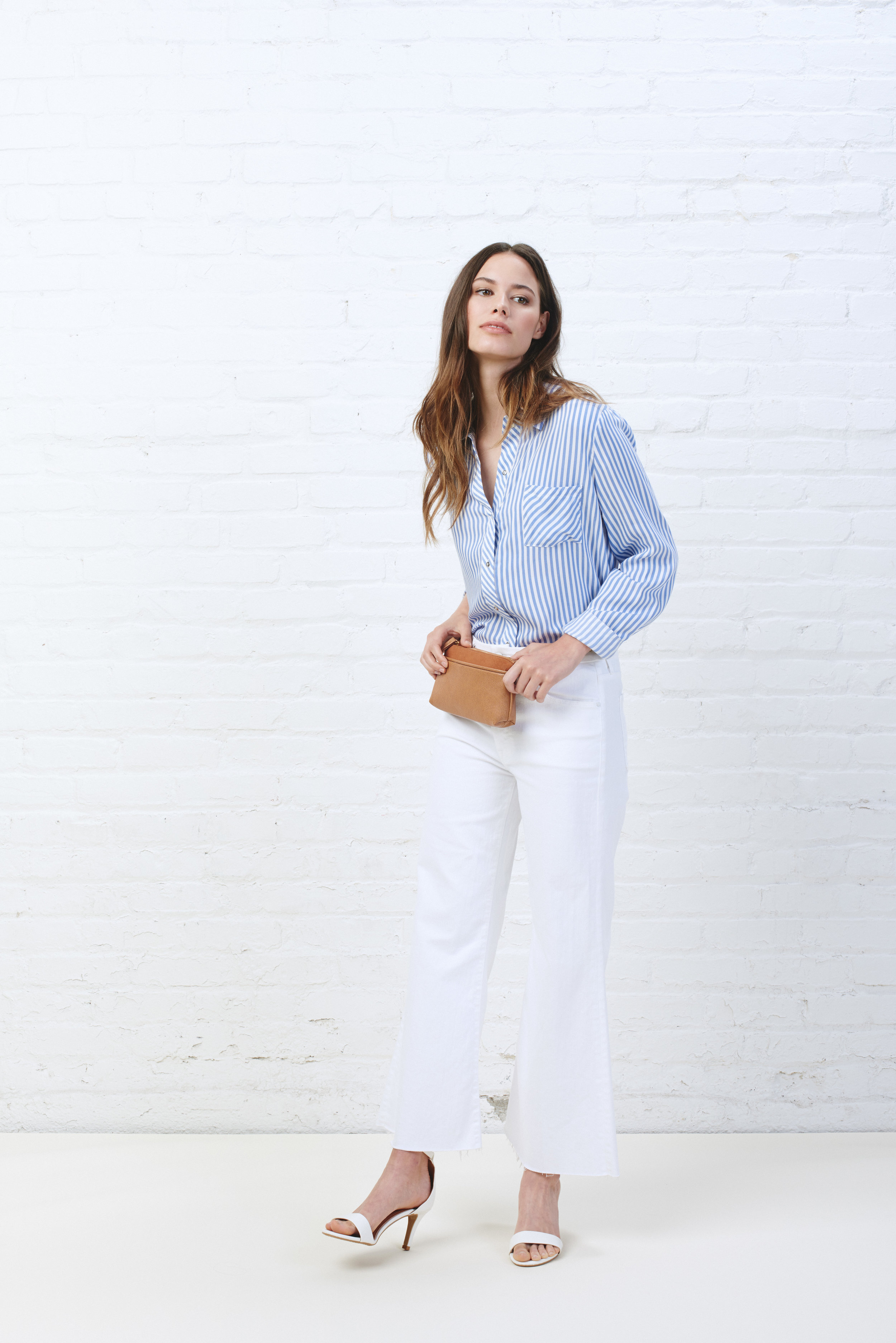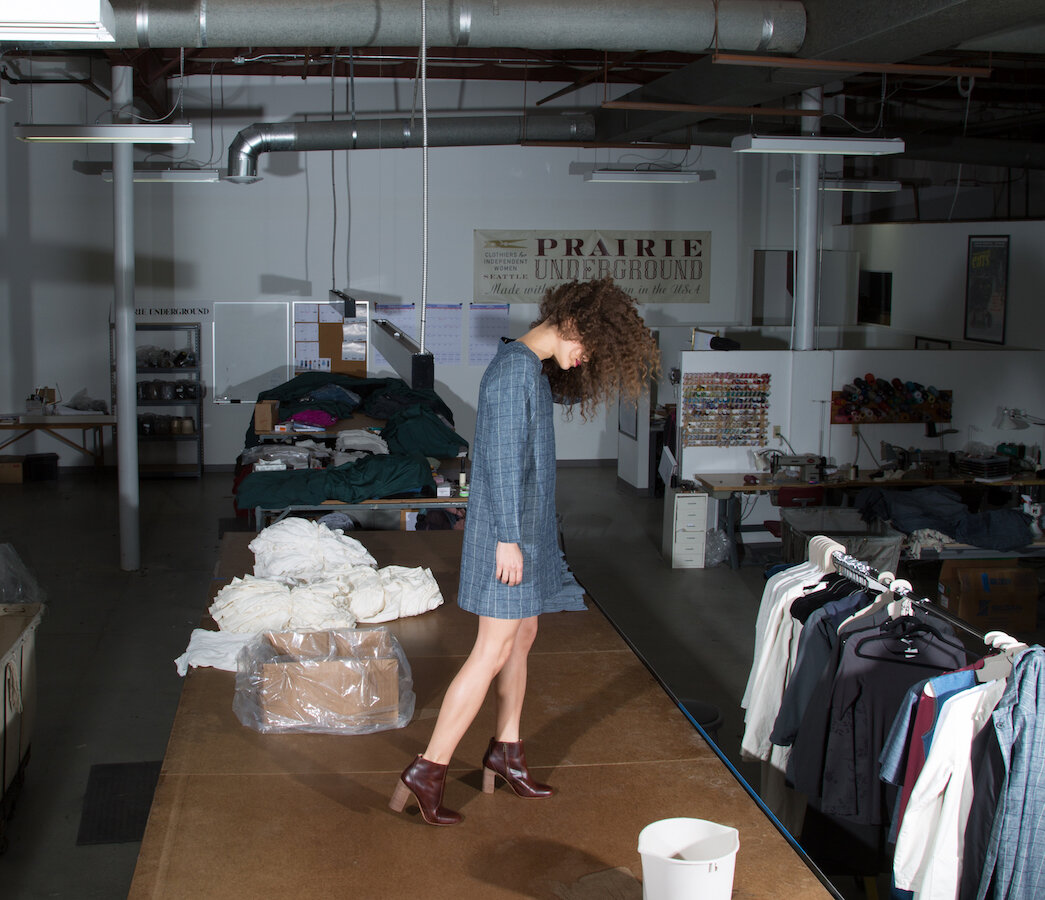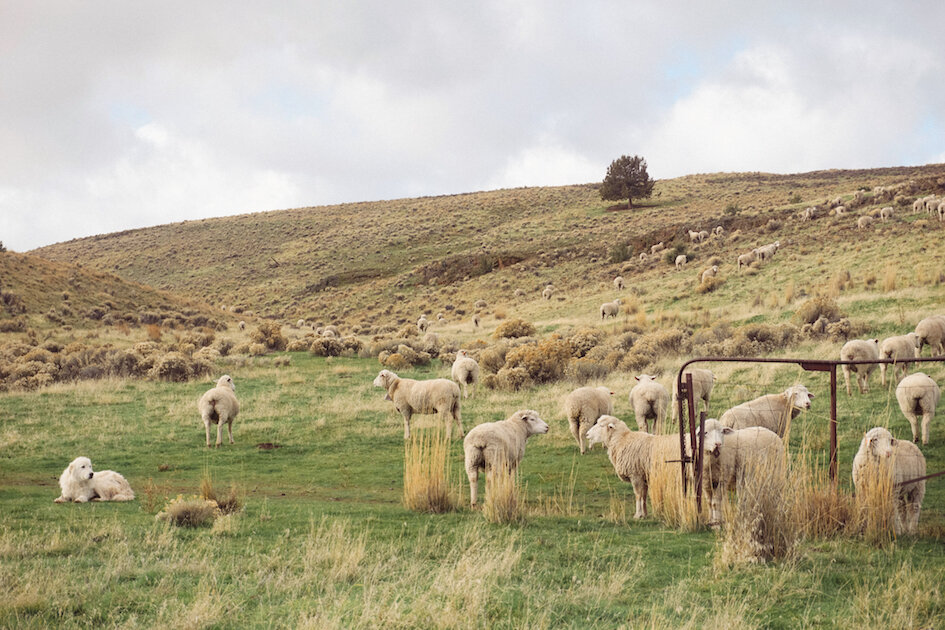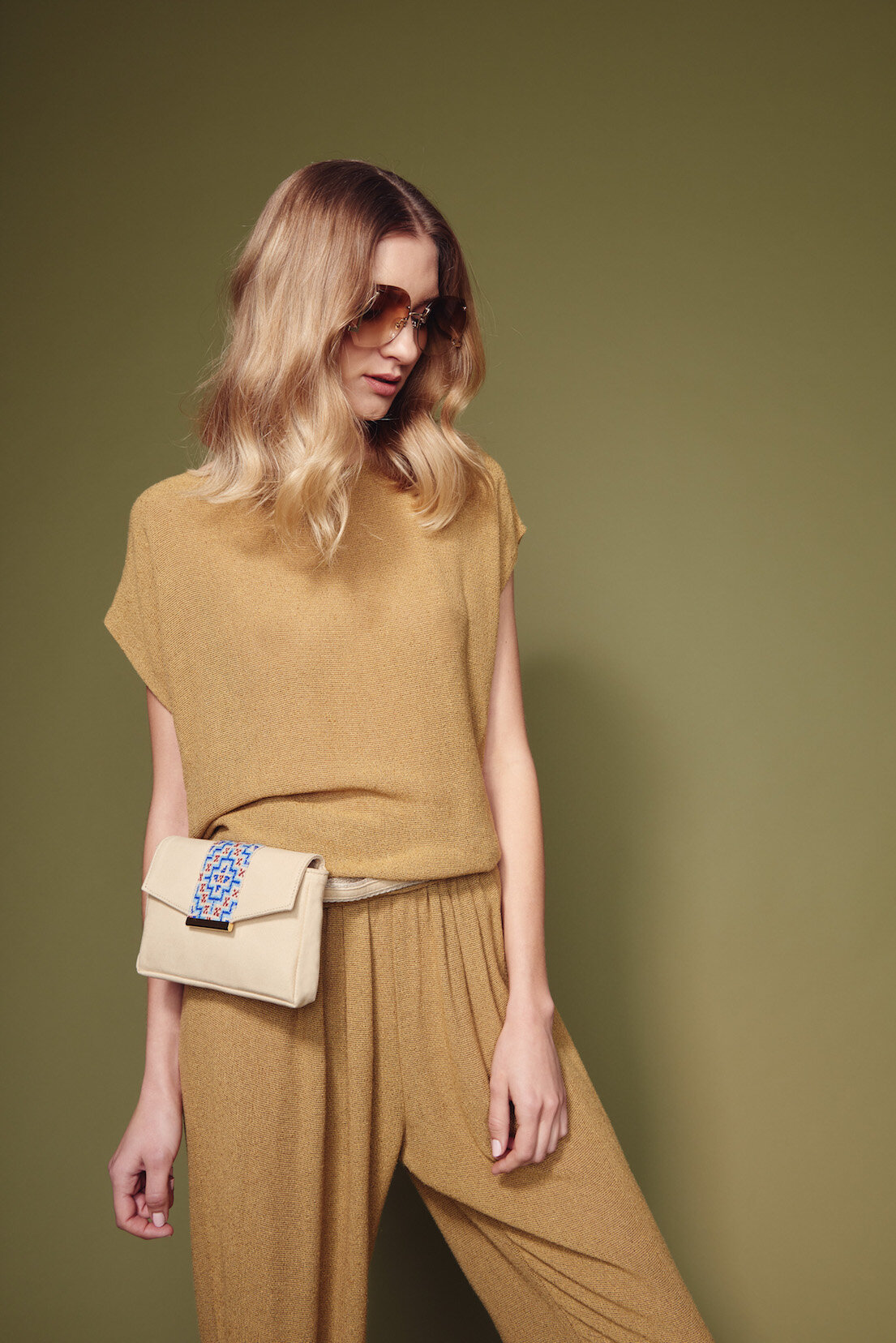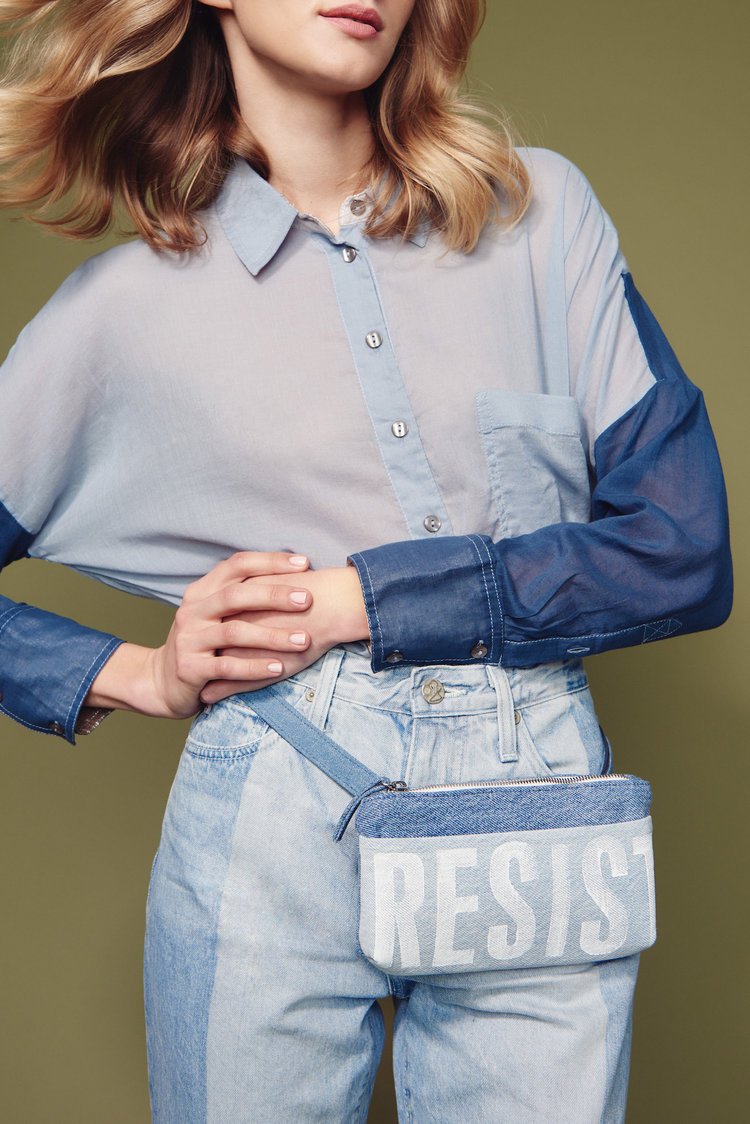
What It Really Takes To Build A Sustainable, Made In USA Apparel Company
Why It’s So Difficult To Produce In The USA – And Why It’s More Important Than Ever To Do It
For small fashion brands, it may be surprising to discover how difficult it is to enter the market of overseas production. High minimum orders, long distance communication and production timing are just a few reasons why this market can be extremely hard to navigate, especially for companies looking to start small and scale.
Transparency, sustainability and a desire to support the local economy are three major factors that compel certain USA-based brands to pursue local manufacturing. The ability to visit factories in person can also be invaluable for founders who are learning the ropes and want to be deeply involved in the manufacturing process.
Challenge #1: Finding US-Based Factories
HFS Collective is an example of a company that has managed to produce their product locally in Los Angeles, despite major hurdles. Debra Denniston of HFS Collective first became addicted to fanny packs many years ago when her daughters Rachel and Kate were in diapers.
“Finding a factory that would even deal with a small designer like us was almost impossible”
“She used to wear one to keep her keys, cash and credit cards with her as she ran around the park chasing after us, free to leave the big diaper bag unattended,” recalls Rachel Denniston, who co-founded the company with her mother. “To be honest, it was not the best looking fanny pack and when she continued to wear it even after we graduated from diapers and went on to grade school, it became slightly embarrassing (I was a sweet child, I swear).”
Not having a background in fashion or manufacturing, the company says finding a factory in LA was one of the most challenging obstacles they faced.
“After so many brands moved their manufacturing overseas almost two decades ago, most local LA manufacturers were forced to go out of business. Only recently have they started coming back as the demand for American-made goods has increased. However, even now, only 2% of the apparel and accessories are made in the US (and most of that is denim or t-shirts), so finding a factory that would even deal with a small designer like us was almost impossible.”
Challenge #2: Keeping Things Local
For Seattle-based Prairie Underground, maintaining a symbiotic presence within the local economy has always been a part of their ethos. “Growing up in the middle of the US and witnessing the way small towns created their own economy had a profound impact,” says Prairie Underground co-founder Davora Lindner. “While we had a lot to rebel against in Nebraska, ideas of self sufficiency and conservation of resources made powerful impressions. Scaling our business to maintain those principles is part of our mission.”
“Witnessing the way small towns created their own economy had a profound impact. While we had a lot to rebel against in Nebraska, ideas of self sufficiency and conservation of resources made powerful impressions.”
Challenge #3: Overseeing The Entire Production Process
Founder of 1×1 Ashley Denisov feels that there is a great benefit to producing her line locally. “Meeting directly with my pattern maker, reviewing samples, and overseeing the entire production process allows me to maintain greater transparency and quality control, to support the local economy, and to personally ensure that our workers’ rights are being upheld. I’ve grown close relationships with the people who run these factories, and I rely on their experience and expertise to produce the best quality product.”
“Overseeing the entire production process allows me to maintain greater transparency and quality control, to support the local economy, and to personally ensure that our workers’ rights are being upheld.”
Challenge #4: Small Batch Production
After these companies integrated into the local infrastructure, moving production overseas started to look less and less appealing.
“For a company our size it’s still a compelling argument for domestic manufacturing,” says Linder of Prairie Underground. “Producing limited production runs is an area where US production is poised to grow. We pay premium prices for our cut and sew but we can also produce less, allowing us to test new styles and offer ethical, fair trade garments that are beautifully made and unique in the market.”
“We pay premium prices for our cut and sew but we can also produce less, allowing us to test new styles and offer ethical, fair trade garments that are beautifully made and unique in the market.”
Denisov agrees that the core of her company’s business model depends on the willingness of local manufacturers to produce in small quantities. “As our name suggests, 1×1’s business structure is based around the idea that we are designing and releasing small collections in limited quantities one at a time. This strategy allows us to grow bit by bit but it also lets us test new styles with lower risks.”
Challenge #5: Knowing The Craftspeople Who Create Your Line
“We truly believe that the happy energy these craftspeople put into our bags is what makes them so beautiful.”
“We really don’t understand how designers can have their bags made overseas,” says Denniston of HFS Collective. “Once we figured things out, we explored that option but decided that we are too “hands on” for that to ever work for us. We love knowing the individual people who make our bags, knowing that they are happy, well-paid and enjoy their work. This is important to us because we both truly believe that the happy energy these craftspeople put into our bags is what makes them so beautiful.”
Challenge #6: Raising The Standards By Using Sustainable Materials
1×1, HFS Collective and Prairie Underground all consider sustainable materials integral in their brand’s product standards. The Merino Wool 1×1 uses for their wool collection comes from Imperial Stock Ranch, located in Oregon. “They have adopted “no-till” farming practices, which means that they no longer plow the land. Not only has this preserved the soil and doubled the yield of annual harvests, but the lack of tilling reduces erosion and use of fossil fuels, improves stream water quality and benefits local fish and wildlife populations,” says Denisov.
“By supporting farmers who produce a beautiful, quality product in a sustainable way, we are stimulating an industry that has been in steady decline since the 1940s.”
“By supporting farmers who produce a beautiful, quality product in a sustainable way, we are stimulating an industry that has been in steady decline since the 1940s. The United States used to be the world’s fifth largest wool producer. Today, it accounts for less than 1% of wool production. Despite this declining market, Imperial Stock Ranch is thriving as both brands and consumers demand more accountability for their products.”
Prairie Underground has been incorporating sustainable fibers in every collection they have produced. “We love cotton and organic cotton that lasts a long time, while still remaining biodegradable. Hemp is a such a rustic fiber and yet it drapes beautifully and offers improbable volume while enduring like nothing else. We work in and out of hemp because it goes a long way in your wardrobe and generally doesn’t need to replaced very often. Most recently we’ve been keen on telling the story of deadstock textiles and truly reimagining abandoned and impenetrable textiles to create something entirely new and desirable.”
HFS Collective has made it their mission to educate their customers about vegan leather alternatives.
“Not many people know this, but leather is actually pretty toxic – not just to the environment, but to people too. The vegan leathers we source are made from polyurethane, an eco-friendly alternative to the more common and less expensive material known as PVC. In addition, they are Oeko-Tex Standard 100 certified, which means they are free from organic solvents, odors, and environmental toxins such as formaldehyde, pesticides, phenols, chlorine, heavy metals, carcinogenic and allergy-inducing dyes common in many synthetic leathers.” HFS Collective is also working with a new and even more sustainable leather alternative called Piñatex, or Pineapple Leather, for their Fall ‘17 collection.
Making quality products from sustainably sourced materials allows companies to create a dialogue with their customers, who are becoming increasingly interested in the conditions and processes by which their products are made. Such customers are beginning to buy less clothing, choosing instead to spend more on quality products that make them feel connected to the story of their production. And if that story connects them to a beautiful, sustainably made item that is built to last, it in turn creates a compelling reason to invest in USA-made brands.
